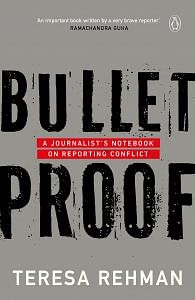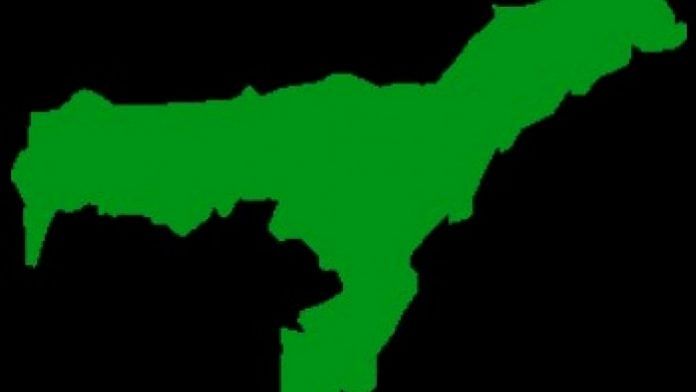ULFA, late 1980s. Exciting things are happening in the publicity wing of the outfit. The fledging publicity wing is witnessing some major changes, with its foray into cyberspace, its first major brush with technology! In 1989, the banned outfit acquired its prized possession—an Apple Macintosh for a precipitous price of Rs 1.5 lakh from Dhaka, the capital of Bangladesh. It is a closely guarded secret and the then ULFA publicity secretary Sunil Nath, alias Siddhartha Phukan, is one of the few people who knew about it.
It is not a regular acquisition. It changed the way the outfit delivered messages in its early days. In the initial years, militant groups used human couriers (even women) to deliver messages. This system has its pitfalls—the danger of being caught by security forces. But the proliferation of the Internet changed things. Nath propelled the IT revolution in the outfit, creating a safe space, overcoming psychological and geographical barriers, for sending messages to the outside world, especially the media.
Nath is always gentle and solicitous. Fluent in English as well as Assamese, this former ULFA top gun has engaging stories to tell. There is never a boring moment with him. I have always found him invigorating and intellectually inclined. I have had long conversations with him, who was once one of the think tanks of the proscribed outfit. Media-savvy and a master narrator, he was literally the voice of the ULFA, and an effective voice. In a conflict situation, rumours fly thick and fast, which is why militant outfits were conscious of the power of the media to put across their views. Therefore, the publicity wing of an insurgent outfit was one of its most vital operations.
I patiently listen as we have a long conversation on ULFA supremo Paresh Baruah (PB). He tells me why PB has managed to elude the security forces for so many years. One of the basic tenets of guerrilla warfare is that ‘the city is the cemetery of revolutionaries’, and PB follows that principle unerringly. He generally avoids cities and prefers the jungles, unless, of course, when he is in a foreign country. He avoids all kinds of civilian contact, except telephonic conversations. Many people talk to him regularly but never get to meet him. Except for a few senior members of the outfit, he is just a name for many. He deliberately maintains his distance from everyone, as if they will be able to pre-empt his moves, if people get to know him.
Alos read: Burden of India’s internal conflicts are on smaller states with limited political clout: Data
PB has been on Assam Police’s ‘Most Wanted List’ for many years now.1 I find it intriguing that PB started writing regularly in the local language dailies. Nath explains that it is not the first time that he has written articles for the newspapers. He writes on and off whenever he feels he wants to write and express his views. It may not necessarily be that he is trying to reach out to the masses. Nath insists that Baruah is capable of writing and that nothing is ghostwritten. ‘In fact, in his schooldays, PB used to get merit scholarships, though he academically studied only up to class twelve. When I left the outfit in 1991, he was an avid reader and deliberately tried to pick up speaking in English,’ says Nath. He adds, ‘I may not agree with what he has to say, but I will always support his unconditional right to express his views.’
As a journalist reporting from a conflict zone, I am always intrigued by the publicity wing of the militant outfits. I prod Nath about his views on media. He feels that both the state and the rebels try to influence and, if possible, coerce the media. Moreover, the sympathy among a section of the local media for the rebels, i.e., the ‘our boys’ syndrome, affects its objectivity and neutrality.
Nath was in charge of ULFA’s publicity and naturally had interacted with the media closely. After leaving the outfit, it was more of an instinctive act than a well-thought move to be a media person. ‘I tried my hand in business too but failed. Media is the only field where I feel comfortable and confident. It was a natural choice,’ he says.
He manages to build a cocoon around him with his pen. He welcomes the media ‘boom’ in the region. The rise in the number of newspapers and channels has effectively eliminated the ‘syndicate’ of media barons. It has become a lot harder for some individual ‘media baron’ to influence and manipulate public opinion for their own interests. The grip of some newspapers during the pre-boom days has proved unhealthy in Assam. ‘I don’t think the increased quantity has necessarily affected quality. On the other hand, fresh talent has emerged. Increase in competition has effectively resulted in increased efficacy,’ he says.
It’s a fact that journalists in the region often face attacks. Nath is against any attack on media persons and feels that these killings should be severely dealt with, and the government should be made to take prompt and effective action against the culprits. The media persons, however, should also remember that ‘journalism’ and ‘activism’ are two different spheres of activity. A journalist should remain objective and neutral. He is free to express his personal opinions through his writing, but his reporting of events has to remain objective. He, however, does not disagree with the fact that militant groups attack the freedom of the press from time to time.
He does not agree with the term ‘mainstream media’. He doesn’t agree that ‘north-east/Assam’ is a ‘side stream’. He admits that we will have to understand that this region is neither the political nor the economic hub of the country. Being peripherally situated, naturally, it gets less focus than other parts. Remote parts of Assam/north-east India get less focus/coverage in the local media, as they are centred around Guwahati. Though unfortunate, it happens everywhere and at every level.
However, he finds it very disgusting when certain media houses act as mouthpieces of insurgent groups. ‘I think I owe an explanation here. The media houses, posing as supporters of the rebels, do so, not because of their love for the rebel cause, but because of their projected image as antiestablishment gets them better circulation.’ Sensational and irresponsible reporting make them ‘popular’, while they go on dishing out distorted news and half-truths. It is indeed a very sad state of affairs.
He started off as a novice while being at the helm of affairs in ULFA’s publicity wing. They did not know even the ABC of media. They did not go to any media school, nor was there anyone to train them on the nuances of media operations. At a later stage, however, they tried to train the ‘boys’ working in the publicity wing. The main source of news for the publicity wing were newspapers published from Assam, and some important ones from the rest of India and abroad. Radio was also a handy source, especially in the remote areas.
Nath doesn’t quite agree that the pen is mightier than the sword. ‘I believe both the pen and the sword have their own importance and relevance. I have always felt more empowered with a pen than a gun.’
Also read: 15 August is special for Assam and it’s not just about Independence Day
Out of the ULFA, he is now relishing every moment of his new-found freedom as an independent media person. As a spokesperson for the ULFA, he spoke for organizations, espousing the official line, irrespective of his own personal opinion. It was more like PR work. Sometimes, he found it frustrating. But now he is free to air his own opinions.
 This excerpt from Teresa Rehman’s Bulletproof: A Journalist’s Notebook on Reporting Conflict has been published with permission from Penguin Random House India.
This excerpt from Teresa Rehman’s Bulletproof: A Journalist’s Notebook on Reporting Conflict has been published with permission from Penguin Random House India.



